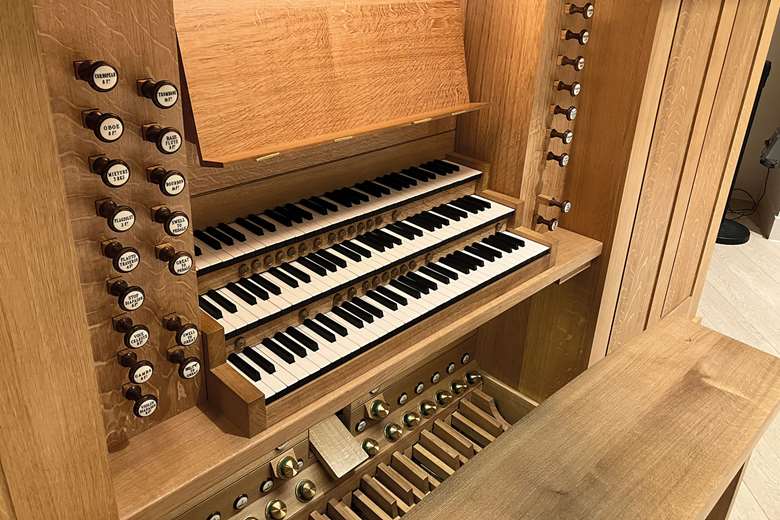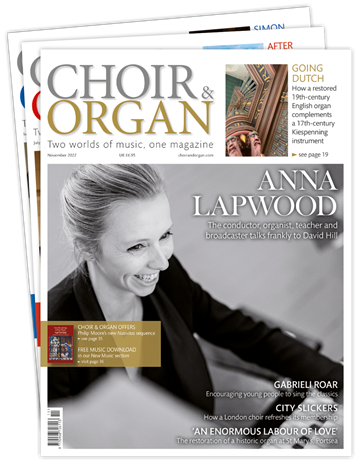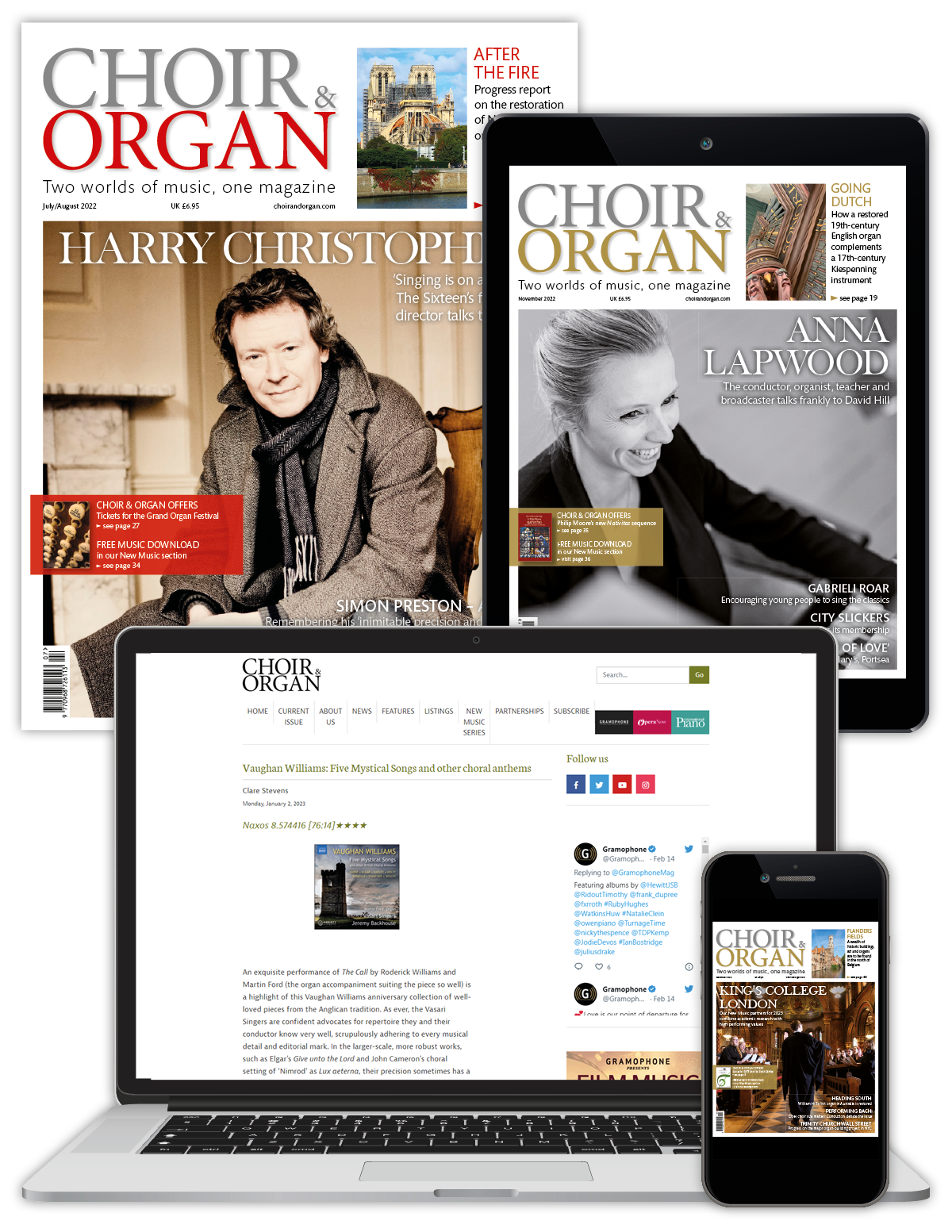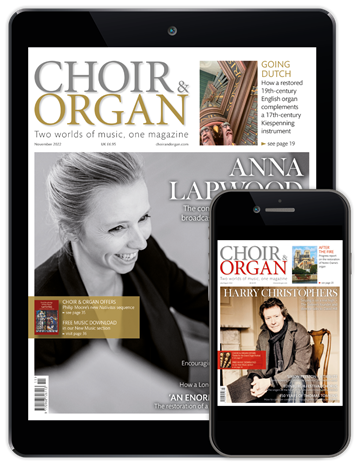Exploring the Juliet Organ by William Drake Ltd at the Royal Birmingham Conservatoire
Tom Bell
Friday, February 21, 2025
Tom Bell visits the Royal Birmingham Conservatoire to listen to its latest new addition to the organ department: a Romantic-style practice organ from William Drake Ltd

Royal Birmingham Conservatoire (RBC) has built for itself a strong reputation in organ tuition. Head of Organ Studies Daniel Moult, his predecessor Henry Fairs and colleagues, have over the past several years moulded the organ department into one held in high regard internationally. Yet, until recently there was a glaring problem: the conservatoire’s stock of organs was inadequate. A small number of mechanical-action practice organs on site were supplemented by the Susi Jeans organ in the organ studio: a venerable and charming organ with a long history. Yet, as the main instrument, it was no match for the organ facilities found in other UK conservatoires. With that instrument rehomed in 2021, the space was filled by the Wolfson Organ, built by Flentrop [see C&O Jan/Feb 2022, pp18-22). It was never the plan to stop there. A remarkable series of organ installations is underway at RBC, of which the instrument reviewed here – the Juliet Organ – is the third of five. The George Cadbury Organ, a practice organ by Klop, also arrived recently; it supplements the existing practice organs by Tickell (two) and Walker (one) already on site.
Made by William Drake Ltd, the Juliet Organ (intriguingly named thus by its anonymous donor), sits opposite the Wolfson Organ in the organ studio. The site is rather unusual. In the words of Joost de Boer (managing director at William Drake Ltd), the organ has a ‘small, rather triangular footprint’ to ensure it does not impinge too much either on windows or seating capacity. The limited footprint, continues De Boer, ‘dictated that the Swell department could not be in its usual position behind the Great, as this would make the organ too deep.’ The Swell faces across the organ, almost at right angles to the Great at the treble end, ‘making it necessary to design an action which also turns right towards the Swell soundboard almost immediately behind the keyboards.’

William Drake manging director Joost de Boer refines pipe mouths in the workshop (photo: Greg Milner)
The sensitive and intimate acoustic made it necessary to think carefully about the design of the Swell shutters. Venetian (horizontal) shutters have been employed, as De Boer was concerned that the vertical variety would have caused sound projection to change markedly across the space, as the box was opened or shut. The result is excellent with a seamless crescendo and diminuendo achieved. The box gives an impressive pianissimo effect too, especially so given its proximity to the listener.
This is a Romantic organ; as such it complements the Schnitger-inspired Wolfson Organ in the same room. It will also be very different from the other Drake organ RBC has commissioned: the Lady of Clare Organ, an English Baroque organo di legno which during 2025 will be installed elsewhere in the building. Voicing and scaling are derived from the work of John Nicholson from the 1850s to the early 1880s. Explains De Boer, ‘The scaling is modest compared to what others like Lewis might have produced in this period. The mouths narrow toward the trebles; this gives a natural control of the volume of small pipes, which can be difficult in such sensitive acoustics.’
This is an organ inspired by the work of a notable builder of the 19th century, but it is important not to make the mistake of thinking that it is intended as a copy. As Daniel Moult puts it, ‘If we were just teaching English music, stopping at Parry, we might have explored composition pedals or a trigger swell. But it’s also an organ on which we are going to be teaching music far removed from that.’There is a coupler manual, principally to give a third keyboard for practice of large-scale Romantic and modern works. ‘The organ can’t be exclusive to one repertoire,’ explains Moult. ‘It’s an organ the students have a lot of access to, and we have to be pragmatic. We’ve got to have something with three manuals and full compass manuals and pedals.’ This enables students to practise music by, for example, Maurice Duruflé. The provision of (turned brass!) pistons was another pragmatic decision, though sadly the restrictions of the site meant that a parallel mechanical stop action could not be provided. This is a shame, as the sheer physicality of manipulating mechanical stops in Romantic music is something organists today need to (re-)acquaint themselves with. Despite a desire for it, mechanical stop action was not feasible on the Juliet Organ: you can’t have everything! Hand registration can still be taught here, of course; the pistons simply mean that students can develop that particular organ management skill also.
In the UK so much of our perception of playing the organ, notes Moult, is rooted in the between-the-wars organs of figures like Arthur Harrison. In addition to their generous registration aids, these instruments had copious steady wind; together these aspects encourage one particular approach to playing the organ. Meanwhile, the winding of the new Drake organ at RBC, with its roots in mid-19th-century design, is rather more sensitive. ‘You have to follow the wind with your ears and your fingers, much as you do with some Hill or early Willis organs. You have to be conscious of how you are releasing chords, and where you are releasing chords, especially in bigger sounds. That’s great as it means the students are exploring the sorts of things you have to do on some Sauer and Cavaillé-Coll organs as well.’ The action is very sensitive; use of the couplers adds additional weight, allowing students to develop relevant aspects of their technique, such as use of arm weight. As with the Wolfson Organ across the room, this instrument is one that broadens horizons, expanding the vision and experience of those who study on it.
What does the Juliet Organ sound like? Daniel Moult commenced his demonstration with the Swell Violin Diapason. Immediately one is gripped by the presence of the organ in the room: this isn’t ‘just’ a practice organ, but an instrument built for the performance of music. A colourful voice in its own right, the Violin Diapason blends very well with the other 8ft flue stops, and provides a foundation to the rest of the Swell Organ. That the 4ft and 2ft stops are flutes seems not to matter in ensemble, as both stops serve their dual purpose beautifully. Although some small regulation of the reeds remained to be completed at the time of my visit, all these stops are really excellent. The Cornopean crowns the Swell, the ensemble being completed by a spicy tierce Mixture, designed to be drawn with the reeds. Full Swell, especially when played with the sub-octave coupler, has a grandeur and richness which belies the organ’s size. 16ft tone in the manuals could not have been achieved without this coupler. By using this and the coupler manual, interesting gradations of power and colour can be realised: Swell at unison; Great with Swell at 16ft pitch; Great and Swell at unison via the coupler manual, also with Swell at 16ft.

The Juliet Organ has a modest footprint to allow space in the organ studio for audience seating and the Wolfson Organ built by Flentrop
The Great Organ is built on the solid foundation of its Open Diapason, a stop which (like the rest of the organ) sings beautifully into the organ studio. The extent to which this organ is well matched to the challenging space it inhabits is evident from this rank alone. The Great chorus may only extend to a Fifteenth, but it is virile and so colourful; the effect is, for me, reminiscent of a lovely 1860s Walker organ I used to play regularly in a Kentish village church. There and in Birmingham, the addition of the Twelfth, somewhat smaller in scale than the Fifteenth, to the already brilliant 8.4.2 combination, is tantamount to the drawing of a small mixture stop. The Cremona is lean enough to blend with the chorus if desired, something that would not be so easy with a full-throated Corno-di-Bassetto; to generate the latter effect the Cremona can be fattened by the addition of other foundation stops on the Great. ‘Keraulophon’ is another interesting stop, yet it is with this and the Swell Gamba that I find myself a little less in sympathy with the tonal vision of the Juliet Organ. The starting transients on both stops are very prominent, albeit ameliorated in combination with other 8ft stops. The sound is perhaps a little ‘busy’ for me, particularly when using the Voix Celeste. Having said that, it is immediately reminiscent of the string stops on the Schulze organ at St Bartholomew’s Armley, an organ of legendary colour. It is good to be challenged by an organ – by an organ builder! – who says, in effect, ‘Here I am, this is how I sound, play me.’ I would welcome the opportunity to visit Birmingham again, accept this challenge, and to experiment further with the string tone of the Juliet Organ.
Finally, some words about my new favourite flute stop: the Great Flauto Traverso. The John Nicholson 4ft model, which directly inspired the 4ft on the Swell, has here been expanded and transposed. The result is an intentionally bold solo stop, but one which combines superbly with the stops around it, binding the ensemble of the Juliet Organ together. On its own it is so beguiling. I loved it, as indeed I so enjoyed the whole organ. This superb instrument invites thought and promotes learning. ‘We hope it will remain an inspiration to all at the Royal Birmingham Conservatoire for a long time,’ says Joost de Boer. I am sure it will.

Tom Bell is a performer, educator and independent organ consultant. He lives in the north of England






